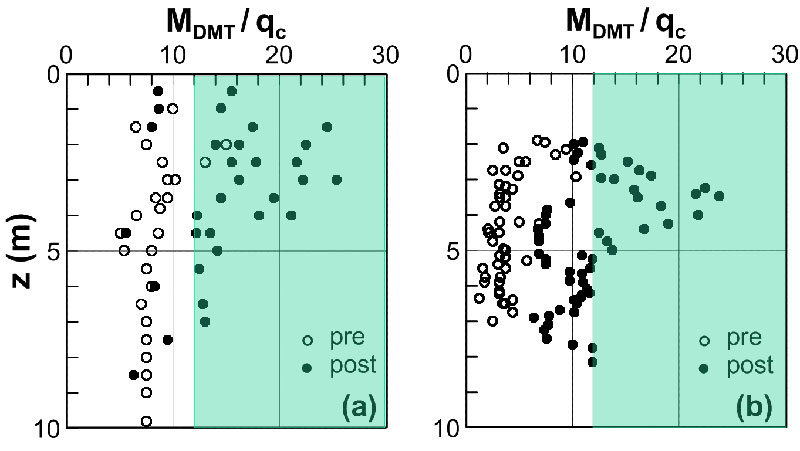The DMT has been frequently used to check the effectiveness of the compaction, by comparing DMT results before and after the treatment. The compaction is generally reflected by a substantial increase of KD and MDMT. Schmertmann (1986) found that the compaction produced an MDMT gain approximately twice the qc gain (note that the increase of MDMT is primarily due to the increase of KD). A similar trend was observed by Jendeby (1992) who found, upon compaction of a loose sandfill, an increase of the ratio MDMT / qc from a pre-compaction MDMT / qc ≈ 5-12 to a post-compaction MDMT / qc ≈ 12-24 (Fig. 2). The fact that MDMT / qc increases with compaction (note that compaction is a way of applying stress history) is due to the fact that OCR increases MDMT at a faster rate than qc (at least in quartz sands). These findings have been confirmed by many researchers, e.g. Balachowski 2015: “The post-treatment MDMT is on average 7.6 times higher than MDMT before compaction. The mean increase of MDMT within the compacted sandy layer is about 2.3 times higher than corresponding increase of qc “.
Many designers like to know not only the gain in M, but also the gain in OCR due to the compaction. OCR in granular soils can be estimated from the ratio MDMT / qc using the Monaco (2014) Eq. :



